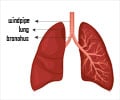Although 90 per cent of cases of invasive pneumococcal diseases occur in healthy young children many European countries still only vaccinate selected at-risk groups against IPD.
A study published in the April issue of IJCP, the International Journal of Clinical Practice reveals that although 90 per cent of cases of invasive pneumococcal diseases (IPD) like meningitis - occur in healthy young children many European countries still only vaccinate selected at-risk groups against IPD.
This is despite growing evidence that universal vaccination of infants and young children reduces their risk and also provides added indirect "herd" protection for other unvaccinated members of the community. .Children in high risk groups include those with underlying medical conditions, such as sickle cell disease, HIV or diabetes. .
The general European situation contrasts with the United States, which adopted universal vaccination with the 7-valent pneumococcal conjugate vaccine in August 2000, following the advice of the US Centers for Disease Control and Prevention (CDC) and the American Academy of Pediatrics. .
The CDC recommended vaccinations for infants and children under two years-old, with catch-up vaccinations targeted at children aged two to five years with particular health problems. US authorities also highlighted the need for certain minority and ethnic groups to be added to the list, together with children attending day care. .
A European assessment carried out by the authors in August 2005 showed that most countries - Belgium, Germany, Denmark, Finland, the UK, Ireland, Iceland, Norway, Portugal and Sweden - did not offer universal national or regional IPD immunisations, while Austria and France provided the most comprehensive guidelines for vaccinating at-risk groups. .
Since then the UK Government has announced that the 7-valent pneumococcal conjugate vaccine will be added to childhood immunisation programmes from this year, pointing out the "immense impact" it has had in the US. .
Advertisement
"Restricting pneumococcal immunisation to children who have a serious health problem that could make them more susceptible means that only a small percentage of the overall cases of childhood IPD may be prevented. Herd protection cannot be achieved without broad vaccine coverage" says lead author Dr Mark Fletcher, Director of International Scientific and Clinical Affairs at Wyeth Vaccine Research, Paris. Most children hospitalised for IPD do not belong to a recognised at-risk group, he adds. Surveys in the US and Europe have shown that only ten to 27 per cent of children developing IPD have an underlying health problem. .
Advertisement
Low birth-weight babies face a 2.6 greater risk than normal birth-weight babies and premature babies face a 1.6 greater risk than full-term babies. .
Rates increase dramatically if children have conditions such as HIV and AIDS (11,300 cases a year per 100,000 children under three) or sickle cell disease (5,500 to 6,500 cases a year per 100,000 children under five). .
Surveys carried out in the US before the 7-valent pneumococcal conjugate vaccine was universally introduced there showed that African American children under the age of two had a 1.6 greater risk than white children of the same age. .
The IJCP paper also carries a detailed analysis of vaccine prescriptions in the UK, which shows that at least 4,080 children received the pneumococcal vaccine between January 2002 and August 2004. .
Research carried out with child experts in various medical specialties identified that UK children with nine key illnesses received the vaccine. Children suffering from coeliac disease were the largest group (34 per cent), followed by sickle cell disease (15 per cent) and chronic cardiac disease (12 per cent). .
Other illnesses included cystic fibrosis, chronic liver disease, renal failure, chronic lung disease and HIV. .
"But identifying high-risk individuals is often difficult and pneumococcal vaccination programmes that target only certain subpopulations will still miss people who could develop pneumococcal disease" concludes Dr Fletcher. .
"US studies carried out since the introduction of universal vaccination show that IPD has fallen among vaccinated groups and has also led to a decrease in non-vaccinated groups. .
"For example, studies published in 2005 show that three years after routine vaccination was introduced in the US, the CDC noted a 94 per cent reduction in IPD caused by strains covered in the vaccine in children under five years old. .
"In addition, the incidence of disease caused by these strains fell by 55 per cent among adults aged 50 years or older, who tend to be more susceptible to IPD than younger adults. This clearly demonstrates that universally vaccinating children provides herd protection for other unvaccinated groups. .
"Based on the success of the US experience, universal vaccination appears to be the most effective option for protecting all children, including those who are at risk simply because of their young age. .
"An added bonus is that it also appears to protect other unvaccinated members of the community. .







